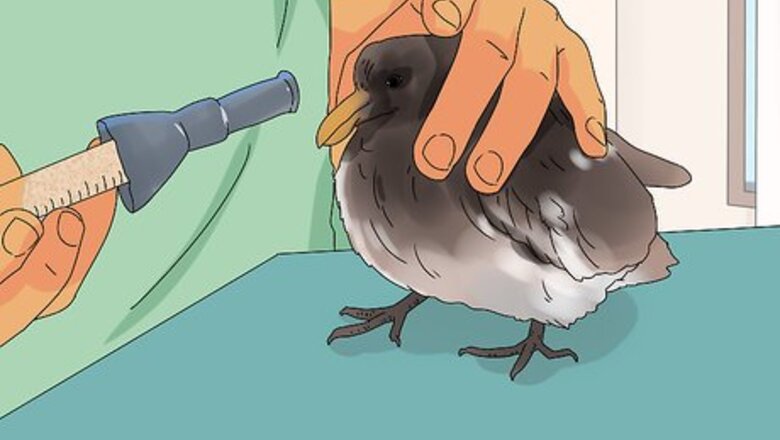
views
X
Research source
Feeding a Fledgling Pigeon
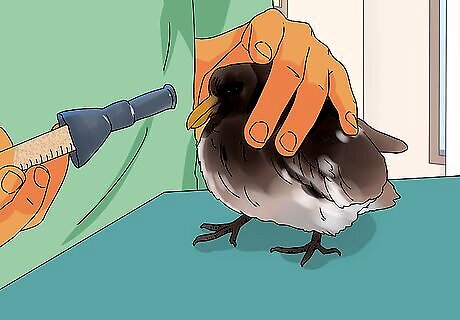
Feed the fledgling baby bird food. The best food for a fledgling pigeon is a commercial baby bird formula. These can easily be obtained from a pet food supply store. You can also feed a fledgling pigeon chick crumbles that can be crushed into smaller pieces and mixed with water. These can be purchased at a pet store. In emergency situations, you can feed a fledgling pigeon dog biscuits that have been crushed and softened by mixing with warm water. Do not feed a fledgling milk or bread crumbs.
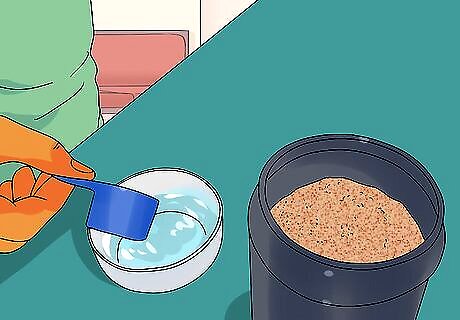
Mix the baby bird formula with water. Follow the instructions provided on the package in order to prepare the formula for feeding. In most cases you will need to mix the formula with warm water. For young birds you will mix 1 part formula with 6 parts water. As the pigeon ages you will decrease the water content. Do not heat the water or formula in the microwave because this can create hot pockets that will burn the fledgling.
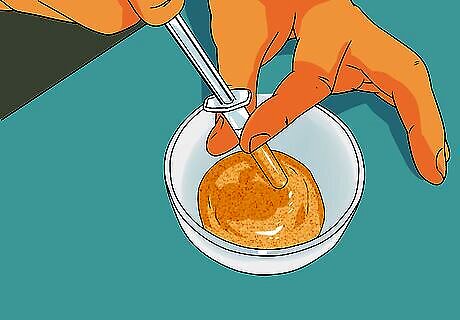
Fill the syringe with the formula. Most fledgling pigeons receive their food from their parents. In order to mimic this type of feeding, use a syringe to feed to pigeon. Fill a syringe with the formula. A fledgling pigeon should eat approximately 24 ccs of formula, twice a day.

Push the sides of the beak to open the pigeons mouth. Pigeons don’t open their mouths when they want to be fed. As a result, you will need to push the sides of the beak in order to open the mouth. Have someone hold the body of the pigeon while you use your hands to open the mouth and insert the syringe. Gently squeeze out the formula. Stop feeding the pigeon once the crop is full. The crop is a pocket that hangs on the inside of the chest. When full the chest should feel squishy, like a balloon filled with water.

Feed the fledgling by hand. You can feed a fledgling by hand by placing seeds and chick crumble into the bird's mouth. For very young or distressed birds a syringe is easiest, but as the bird ages it will be able to take food from your hand.
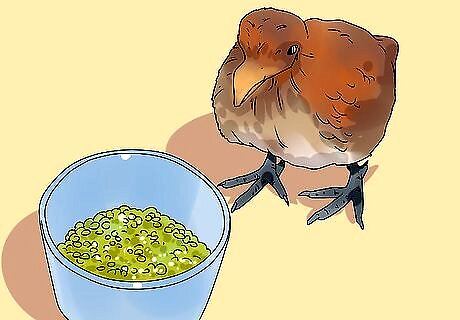
Provide seeds for the fledgling. You should also help encourage a fledgling to begin eating food on its own. Place a few pigeon seeds in the bottom of the cage for the bird to eat. This will help the bird learn to pick up seeds on its own using its beak. Once the fledgling is eating seeds on its own, you can stop feeding it formula with a syringe.
Creating a Habitat for a Fledgling Pigeon
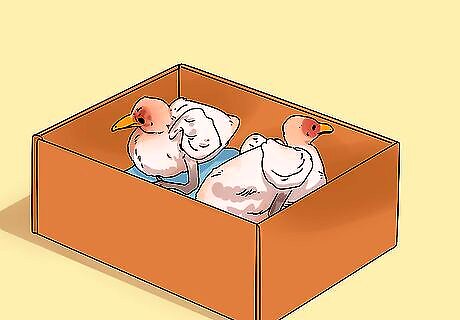
Contain the bird in a box or cage. A fledgling pigeon can be housed in a small cardboard box or bird cage. A young fledgling may be kept in a high-sided cardboard box. The box does not have to be large because this is only a temporary solution. You should take a found fledgling to a wildlife sanctuary or release the bird into the wild as soon as possible. If you are housing the pigeon in a closed cardboard box, make sure there are lots of air holes.
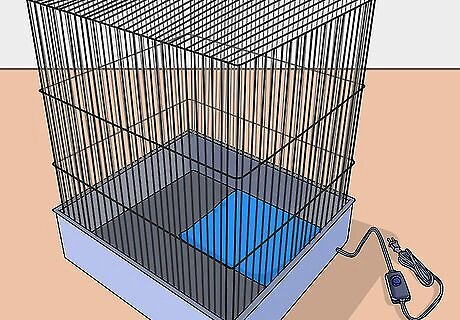
Place a heating pad in the cage. Fledglings pigeons need to be kept warm, especially if they are injured. Place an electric heating pad or hot water bottle in the cage. You should cover the heating pad with towels so that the bird has an indirect heat source. Alternatively, you can place a heating lamp over top of the bird's cage to help keep the bird warm.
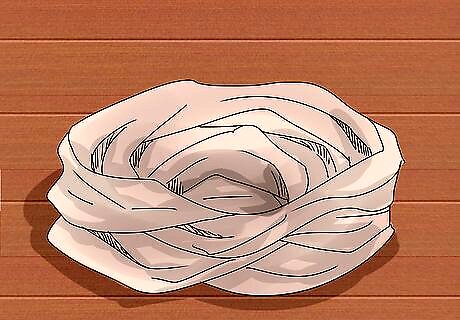
Create a nest using a small bowl and towels. Try and mimic a nest, by lining a small bowl with a dry towel. Place this “nest” in the bird’s enclosure. This will allow the bird to feel cosy and secure. Fill the towel with shredded newspaper to help insulate the pigeon. Change the towel daily in order to keep the nest clean. Do not place the bird on a slippery surface, such as plastic. This could cause their legs to splay, which can impact their development and mobility.
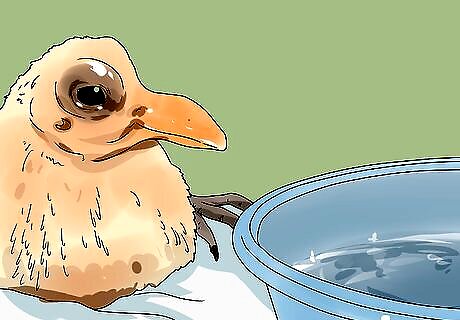
Provide the bird with access to water. It is also important that you provide the bird with water. Fill a small deep and heavy bowl with water. The fledgling should be able to drink water on its own. Do not squirt water into the bird’s mouth.
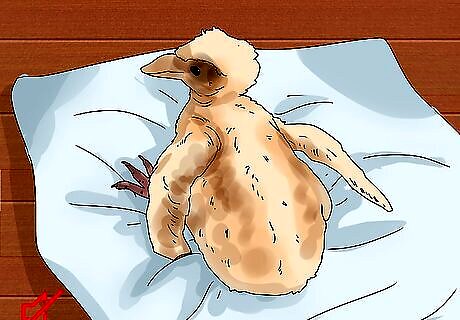
Situate the bird in a quiet area. Place the bird’s habitat in a quiet space away from other pets. You also want to choose an area that doesn’t get a lot of human traffic. This will help to calm the fledgling.
Looking After an Injured Pigeon
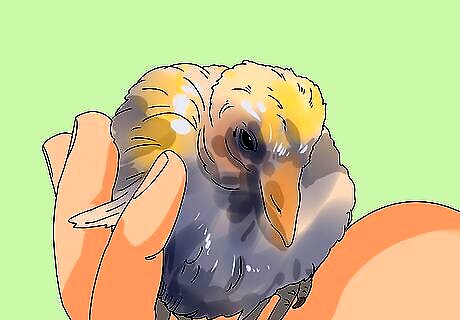
Examine the pigeon for injuries. If you have rescued a fledgling pigeon that you believe is injured, it is important to fully examine the bird for any injuries. For example, the bird may have a broken wing or foot. You should also look for scratches or bleeding in case the bird has been attacked by a predator. If you notice any injuries or ailments, you should immediately contact a rehabilitation center.
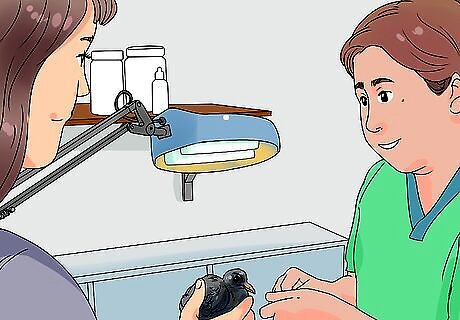
Take the bird to a wildlife rehabilitation center. The best place to take an injured or sick pigeon, is a wildlife rehabilitation center. They will likely be able to provide the bird with the medical attention necessary. They may even be able to house the bird in a sanctuary with other pigeons.
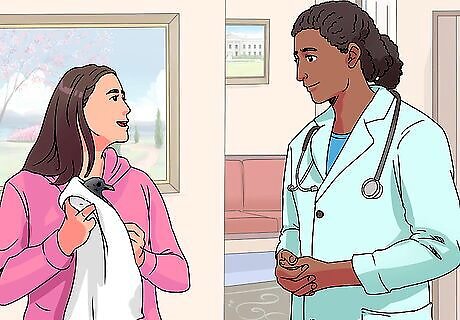
Ask a vet to help the bird. You can take a fledgling pigeon to a veterinary clinic; however, it should be noted that many vets do not have experience nursing or caring for an injured bird. As a result, they will often recommend euthanasia, even in instances when the pigeon could recover.















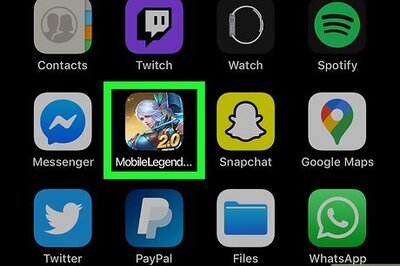

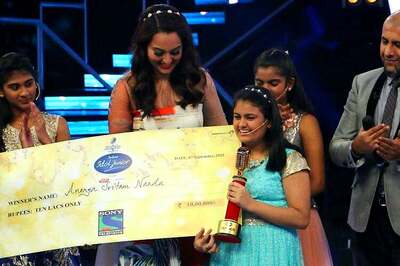

Comments
0 comment